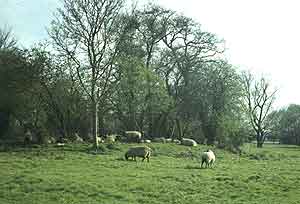 |
 |
 |
 |
 |
 |
 |
 |
 |
 |
 |
 |
 |
 |
 |
 |
 |
 |
 |
 |
 |
 |
 |
 |
 |
 |
 |
 |
 |
 |
 |
 |
 |
Tudor Tour
|
 |
 |
 |
 |
 |
 |
 |
 |
 |
 |
 |
 |
 |
 |
 |
 |
 |
 |
 |
Willen Moat
|
 |
 |
 |
 |
 |
 |
 |
 |
 |
 |
 |
 |
Eggs, poultry and fish are valuable sources of protein. We know that and so did John Mordaunt and the inhabitants of Willen in 1522. But the early Tudor village was not only home to people and their domestic animals, it was home to foxes, polecats, rats, and birds of prey such as the Red Kite; all of which enjoyed ducks and geese as much as the villagers! |
 |
 |
 |
 |
 |
 |
 |
To protect their water fowl the villagers kept them on a small man-made island surrounded by a moat. On the island there was probably a wooden hut raised on legs in which the ducks and geese could shelter at night. In the moat swam the villagers captive fish, such as carp. |
 |
 |
 |
 |
 |
 |
 |
 |
 |
 |
 |
Picture above of geese grazing courtesy of MK Parks Trust |
 |
 |
 |
 |
 |
 |
 |
 |
 |
 |
 |
By the 1970s most of the moat had been filled in. All that was left was a tree covered central mound and a curved dip in the field, which was a favourite shady spot for sheep to rest in the heat of the day. |
 |
 |
 |
 |
Sheep resting in the shade of the old moat in the 1970s, photo G. Higgs |
 |
 |
 |
 |
An archaeological dig of this site found Roman and Saxon remains in the area of the moat (bits of broken pots and roof tiles), as well medieval tiles, and pieces of clay tobacco pipe stem dating from the period 1670-1730, the time of the construction of the new church. This evidence shows that Willen has been inhabited for at least 2000 years. |











